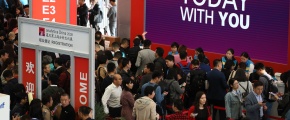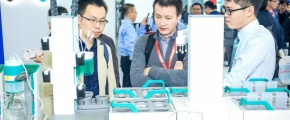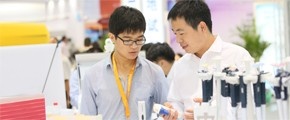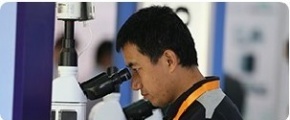
About Randy Kray
Randy Kray is constantly rethinking the way highly complex science facilities work. His enthusiasm for science is infectious -well-balanced by his knowledge of subject matter, and his ability to translate project vision into smart facility solutions.
He is a strategic leader in HOK’s Science + Technology group and brings enormous value to clients with a proven process for translating project vision to facility solutions, knowledgeable coordination of highly technical specialty consultants, and by remaining at the forefront of the profession in understanding emerging issues and trends.
Randy excels in understanding researchers and the facilities they need to solve complex problems. He has been instrumental in planning and designing advanced laboratory facilities for major international projects.
A world-renowned thought leader on a number of subjects, including problem-driven science and high tech core facilities, he publishes articles and presents at conferences around the world.
EDUCATION
University of Manitoba Masters of Architecture , 1993 Bachelor of Environmental Science, 1989
PROFESSIONAL REGISTRATIONS
Architecture: Georgia, Manitoba, Ontario
MEMBERSHIPS
American Institute of Architecture American Biological Safety Association (ABSA) European Biological Safety Association European Research Infrastructure on Highly Pathogenic Agents (ERINHA) American Association for Laboratory Animal Science (AALAS)
RECENT SPEAKING ENGAGEMENTS
“The Future of Campus Facilities and Campus Life: Integrating Academics, Student Life, Athletics + Recreation,” Tradeline University Facilities Conference (2018) “Case Study: University of South Florida, Health - Morsani College of Medicine and Heart Institute” Tradeline Facility Strategies for Medical Schools and the Health Sciences (2017) “Keynote: Laboratory Design and R&D Magazine’s 2017 Laboratory of the Year | Panel Discussion: Designing the Francis Crick Institute” International Lab Design Conference (2017)
Interview with Randy Kray:
We know you lead the project of The Francis Crick Institute, which wined the award of Lab of Year 2017. Do you think there are some concepts or points which can also be shared or used for Chinese customers? Could you share some information and pictures of this project to us?
The Francis Crick Institute project is an exemplary project to demonstrate the briefing and design of interdisciplinary biomedical research space for a diverse set of research themes, encouraging collaboration and shared central technology platforms.
The project statistics are:
NIA: 47380 m2 (510,000 sq. ft.)
Total # of Floors: 7 Floors
Above Grade: 5 Floors
Below Grade: 2 (with interstitial)
Building Population: 1,500
No. Researchers: 1,250
No. Principal Investigators: 120
Laboratories are based on a highly efficient and flexible universal modular concept that supports experimental research. The degree of research visibility, shared support, strategic amenity and interaction zones and the investment in informal collaboration areas create a collaborative scientific workplace that is believed will accelerate discovery and translation into new biomedical technologies.
After decades of development, though China laboratory industry has been ranked among the top of the world, there are still many gaps compared with abroad in terms of its safety, quality, design and sustainability and etc. What advanced technologies or concepts do you think are worth learning for Chinese R&D project?
I am not completely informed of the level the Chinese R&D industry has attained in its quest for excellence in laboratory design. I can share that current best practices and strategies in the EU and NA are focused on flexible design, wellness in the R&D environment, transparency and interaction between lab and non-lab researchers. Designing research environments that support the collaboration between basic scientists, engineers, health professionals, and (in some cases) business experts are becoming more prominent. These interdisciplinary environments are organized to support thematic research agendas tackling complex problems in health, climate, energy and technology.
If you have chance to start a new R&D project in China, what is the ideal project you expect? Can you describe what is your preferred or dream project in China?
A dream project in China would envision an R&D campus that brought together biomedical, chemical and data scientists and engineers to promote medical and biotechnology development for China and world-wide. HOK would bring global best practices and benchmarks in R&D to merge with China practices and scientific culture right transformational project outcomes.
If you or your company already are involved in a project in China, can you share with us some experience as well as the introduction and pictures of the pictures?
This year marks the 35th anniversary of HOK’s presence in China, where the firm has offices in Hong Kong, Beijing and Shanghai.
In 1984, HOK established its first office outside of the United States in Hong Kong, marking an important milestone for the firm. To support increasing project opportunities throughout Mainland China, we added offices in Beijing and Shanghai in 2003 and 2006, respectively. Over the past 35 years, HOK’s Asia practice has experienced steady growth as its client base has spread across China and Southeast Asia, extending into India and the Middle East.
HOK has created large-scale master plans and designed significant buildings and interior environments across China for major clients such as Fosun, Wanda, Greenland, China Resources Land, Ping An Property, China Overseas Land, China Construction Bank and many others. As well as a wealth of commercial and corporate design work, we are currently bringing our considerable Healthcare expertise to major projects in mainland China and Hong Kong.
Please see attached power point with images of HOK China work.
What is the trend in the United States for lab/R&D/Science facility designing or planning?
Very flexible, high performance research space that accommodates individual research needs and provides the opportunity to collaborate with other specialists and expertise in advanced technologies and tools. Another major trend is research facilities that foster the collaboration between academic and industry research stressing innovation and the translation of discoveries into commercialization.




























